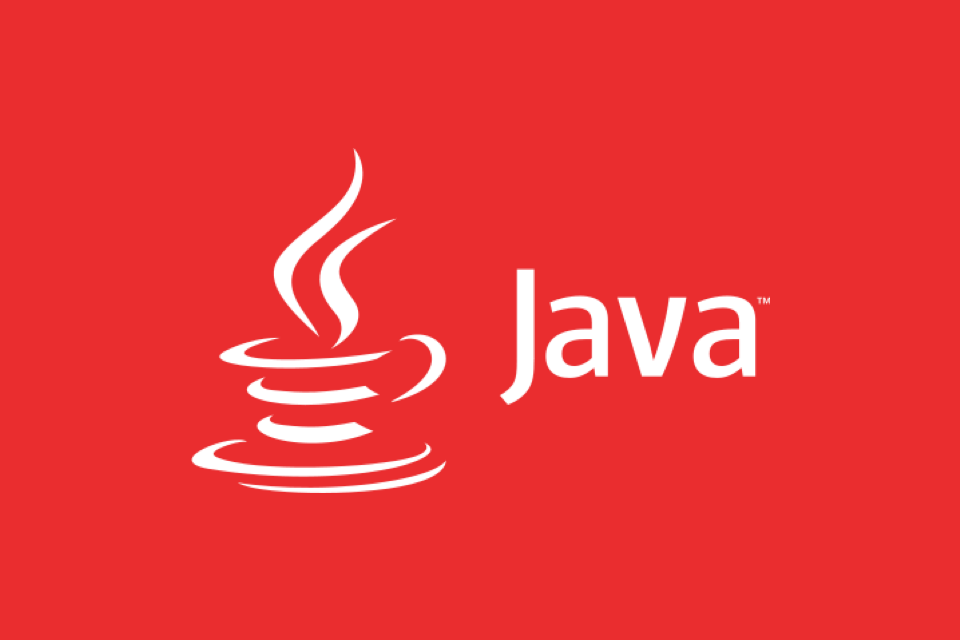Using the new Java Date and Time API (java.time).
Jul 06, 2025 am 02:55 AMThe java.time package of Java 8 provides thread-safe and clear design date and time processing methods. Get the current date and time to use LocalDateTime.now() or ZonedDateTime.now(ZoneId.of("Asia/Shanghai")); 1. Use DateTimeFormatter for formatting, such as ISO_DATE or custom format; 2. The parsing needs to ensure that the string matches the format strictly; 3. Addition and subtraction operations are implemented through plusXxx()/minusXxx(); 4. Use isBefore()/isAfter() for comparison; 5. Use withZoneSameInstant for time zone conversion and support listing of all time zones ZoneId.getAvailableZoneIds().

Java 8 introduces a brand new date and time API ( java.time package), which solves the problems of thread insecure and design chaos in the old version of Date and Calendar classes. This new API is more intuitive, easy to use, and more in line with modern development needs. If you are using Java 8 or later, it is recommended to use classes in java.time to handle dates and times first.

How to get the current date and time?
The most commonly used method is to use LocalDateTime.now() to obtain the time of the current system. It contains information about year, month, day, hour, minute, and seconds, but does not have a time zone.

LocalDateTime now = LocalDateTime.now(); System.out.println(now); // The output is similar to 2025-04-05T14:30:45.123
If you need to include time zone information, you can use ZonedDateTime.now() :
ZonedDateTime nowWithZone = ZonedDateTime.now(ZoneId.of("Asia/Shanghai"));Tips: In distributed or internationalized scenarios, it is recommended to always bring time zone information to avoid data deviation due to the server's local time zone settings.
How to format and parse dates?
Use DateTimeFormatter to facilitate formatting of output dates, or parse strings into date objects.
For example, format LocalDate as yyyy-MM-dd :
LocalDate date = LocalDate.now();
String formatted = date.format(DateTimeFormatter.ISO_DATE);
// Or custom format DateTimeFormatter customFormatter = DateTimeFormatter.ofPattern("yyyy/MM/dd");
String custom = date.format(customFormatter); // The output is similar to 2025/04/05Conversely, if you want to parse from a string to a date:
String input = "2025-04-05"; LocalDate parsed = LocalDate.parse(input, DateTimeFormatter.ISO_DATE);
Note: The format template must strictly match the input string, otherwise an exception will be thrown. For example, if
"2025/04/05"is parsed withISO_DATE, it will fail.
How to add, subtract and compare dates?
Classes such as LocalDate , LocalDateTime , etc. all provide plusXxx() and minusXxx() methods for addition and subtraction operations.
For example, add three days to the current date:
LocalDate today = LocalDate.now(); LocalDate threeDaysLater = today.plusDays(3);
You can also add hours, minutes, months, etc.:
-
plusHours(1) -
plusMonths(2) -
minusWeeks(1)
The date comparison is also very simple, you can use isBefore() and isAfter() directly:
LocalDate d1 = LocalDate.of(2025, 4, 5); LocalDate d2 = LocalDate.of(2025, 4, 6); boolean isBefore = d1.isBefore(d2); // true
What to do if you encounter a time zone?
When dealing with time conversion across time zones, you can use ZonedDateTime and ZoneId .
For example, converting Beijing time to New York time:
ZonedDateTime beijingTime = ZonedDateTime.now(ZoneId.of("Asia/Shanghai"));
ZonedDateTime newYorkTime = beijingTime.withZoneSameInstant(ZoneId.of("America/New_York"));This method will automatically consider factors such as daylight saving time, which is more reliable than manually calculating the offset.
If you want to list all available time zone names, you can do this:
Set<String> zones = ZoneId.getAvailableZoneIds(); // Get all supported time zone names
Basically these common operations. Mastering these points should be enough for processing time in daily development. Although you may be a little uncomfortable at the beginning, after using it a few times, you will find that the design of java.time is really clear and reasonable.
The above is the detailed content of Using the new Java Date and Time API (java.time).. For more information, please follow other related articles on the PHP Chinese website!

Hot AI Tools

Undress AI Tool
Undress images for free

Undresser.AI Undress
AI-powered app for creating realistic nude photos

AI Clothes Remover
Online AI tool for removing clothes from photos.

Clothoff.io
AI clothes remover

Video Face Swap
Swap faces in any video effortlessly with our completely free AI face swap tool!

Hot Article

Hot Tools

Notepad++7.3.1
Easy-to-use and free code editor

SublimeText3 Chinese version
Chinese version, very easy to use

Zend Studio 13.0.1
Powerful PHP integrated development environment

Dreamweaver CS6
Visual web development tools

SublimeText3 Mac version
God-level code editing software (SublimeText3)

Hot Topics
 Selecting Specific Columns | Performance Optimization
Jun 27, 2025 pm 05:46 PM
Selecting Specific Columns | Performance Optimization
Jun 27, 2025 pm 05:46 PM
Selectingonlyneededcolumnsimprovesperformancebyreducingresourceusage.1.Fetchingallcolumnsincreasesmemory,network,andprocessingoverhead.2.Unnecessarydataretrievalpreventseffectiveindexuse,raisesdiskI/O,andslowsqueryexecution.3.Tooptimize,identifyrequi
 What is the `enum` type in Java?
Jul 02, 2025 am 01:31 AM
What is the `enum` type in Java?
Jul 02, 2025 am 01:31 AM
Enums in Java are special classes that represent fixed number of constant values. 1. Use the enum keyword definition; 2. Each enum value is a public static final instance of the enum type; 3. It can include fields, constructors and methods to add behavior to each constant; 4. It can be used in switch statements, supports direct comparison, and provides built-in methods such as name(), ordinal(), values() and valueOf(); 5. Enumeration can improve the type safety, readability and flexibility of the code, and is suitable for limited collection scenarios such as status codes, colors or week.
 Applying Semantic Structure with article, section, and aside in HTML
Jul 05, 2025 am 02:03 AM
Applying Semantic Structure with article, section, and aside in HTML
Jul 05, 2025 am 02:03 AM
The rational use of semantic tags in HTML can improve page structure clarity, accessibility and SEO effects. 1. Used for independent content blocks, such as blog posts or comments, it must be self-contained; 2. Used for classification related content, usually including titles, and is suitable for different modules of the page; 3. Used for auxiliary information related to the main content but not core, such as sidebar recommendations or author profiles. In actual development, labels should be combined and other, avoid excessive nesting, keep the structure simple, and verify the rationality of the structure through developer tools.
 What is the JDK?
Jun 25, 2025 pm 04:05 PM
What is the JDK?
Jun 25, 2025 pm 04:05 PM
JDK (JavaDevelopmentKit) is a software development environment for developing Java applications and applets. It contains tools and libraries required to compile, debug and run Java programs. Its core components include Java compiler (javac), Java runtime environment (JRE), Java interpreter (java), debugger (jdb), document generation tools (javadoc) and packaging tools (such as jar and jmod). Developers need JDK to write, compile Java code and develop with the help of IDE; without JDK, Java applications cannot be built or modified. You can enter javac-version and java-version in the terminal
 VSCode debugger for Java setup guide
Jul 01, 2025 am 12:22 AM
VSCode debugger for Java setup guide
Jul 01, 2025 am 12:22 AM
The key steps in configuring the Java debugging environment on VSCode include: 1. Install JDK and verify; 2. Install JavaExtensionPack and DebuggerforJava plug-in; 3. Create and configure the launch.json file, specify mainClass and projectName; 4. Set up the correct project structure to ensure the source code path and compilation output are correct; 5. Use debugging techniques such as Watch, F8/F10/F11 shortcut keys and methods to deal with common problems such as class not found or JVM attachment failure.
 XML rules: Common errors to avoid
Jun 22, 2025 am 12:09 AM
XML rules: Common errors to avoid
Jun 22, 2025 am 12:09 AM
Methods to avoid XML errors include: 1. Ensure that the elements are nested correctly, 2. Escape special characters. Correct nesting avoids parsing errors, while escape characters prevent document corruption, using an XML editor can help maintain structural integrity.
 How do I set up VS Code for Java development?
Jun 29, 2025 am 12:23 AM
How do I set up VS Code for Java development?
Jun 29, 2025 am 12:23 AM
To use VSCode for Java development, you need to install the necessary extensions, configure the JDK and set up the workspace. 1. Install JavaExtensionPack, including language support, debugging integration, build tools and code completion functions; optional JavaTestRunner or SpringBoot extension package. 2. Install at least JDK17 and verify through java-version and javac-version; set the JAVA_HOME environment variable, or switch multiple JDKs in the status bar at the bottom of VSCode. 3. After opening the project folder, make sure the project structure is correct and enable automatic saving, adjust the formatting rules, enable code checking, and configure the compilation task to optimize the opening.
 Windows search bar not typing
Jul 02, 2025 am 10:55 AM
Windows search bar not typing
Jul 02, 2025 am 10:55 AM
When the Windows search bar cannot enter text, common solutions are: 1. Restart the Explorer or computer, open the Task Manager to restart the "Windows Explorer" process, or restart the device directly; 2. Switch or uninstall the input method, try to use the English input method or Microsoft's own input method to eliminate third-party input method conflicts; 3. Run the system file check tool, execute the sfc/scannow command in the command prompt to repair the system files; 4. Reset or rebuild the search index, and rebuild it through the "Index Options" in the "Control Panel". Usually, we start with simple steps first, and most problems can be solved step by step.







